Who Wants to See a Bald Eagle?!
Adult Bald Eagle at MacEachron Waterfront Park in Hastings.
February 3, 2023
Well, to answer my titular question, apparently everyone. As Hastings’ resident “bird nerd,” I’m approached by people on a regular basis with endless questions and tidbits about birds: the woodpecker in their backyard, the owl they heard the previous night, how birds migrate or why they change color. But sitting atop the leaderboard of bird-related queries is whether the large raptor they saw flying around was actually an eagle. In fact, the topic of eagles is one of everlasting intrigue for the non-birder, and walking around with a camera and binoculars never fails to elicit the famous “are you looking for eagles!?” comment from practically anybody. The excitement in the question is palpable, and understandable. With a wingspan approaching eight feet, a gleaming white head on a dark body, and the illustrious position of America’s national symbol, the Bald Eagle is unsurprisingly an extremely fascinating entity for the general public — especially due to their reputation as a rare species, which, although formerly accurate, no longer stands true. These creatures have an awe-inspiring effect on their viewers, never failing to evoke genuine surprise from countless observers who relish in the opportunity to glimpse a sight of this “notable find.” But that’s where I’m here to simultaneously burst a bubble and, hopefully, give people a new urge to look up. Bald Eagles are quite common in Hastings, and the Hudson Valley in general, and I see them on practically a daily basis. That doesn’t make them any less fun or majestic, but it does diminish the argument that a Bald Eagle sighting in Hastings is a uniquely special moment. Regardless, the fact that many perceive of eagles in this rarified manner means that too few have experienced the glory of a Bald Eagle encounter. That’s what we’re about to change.
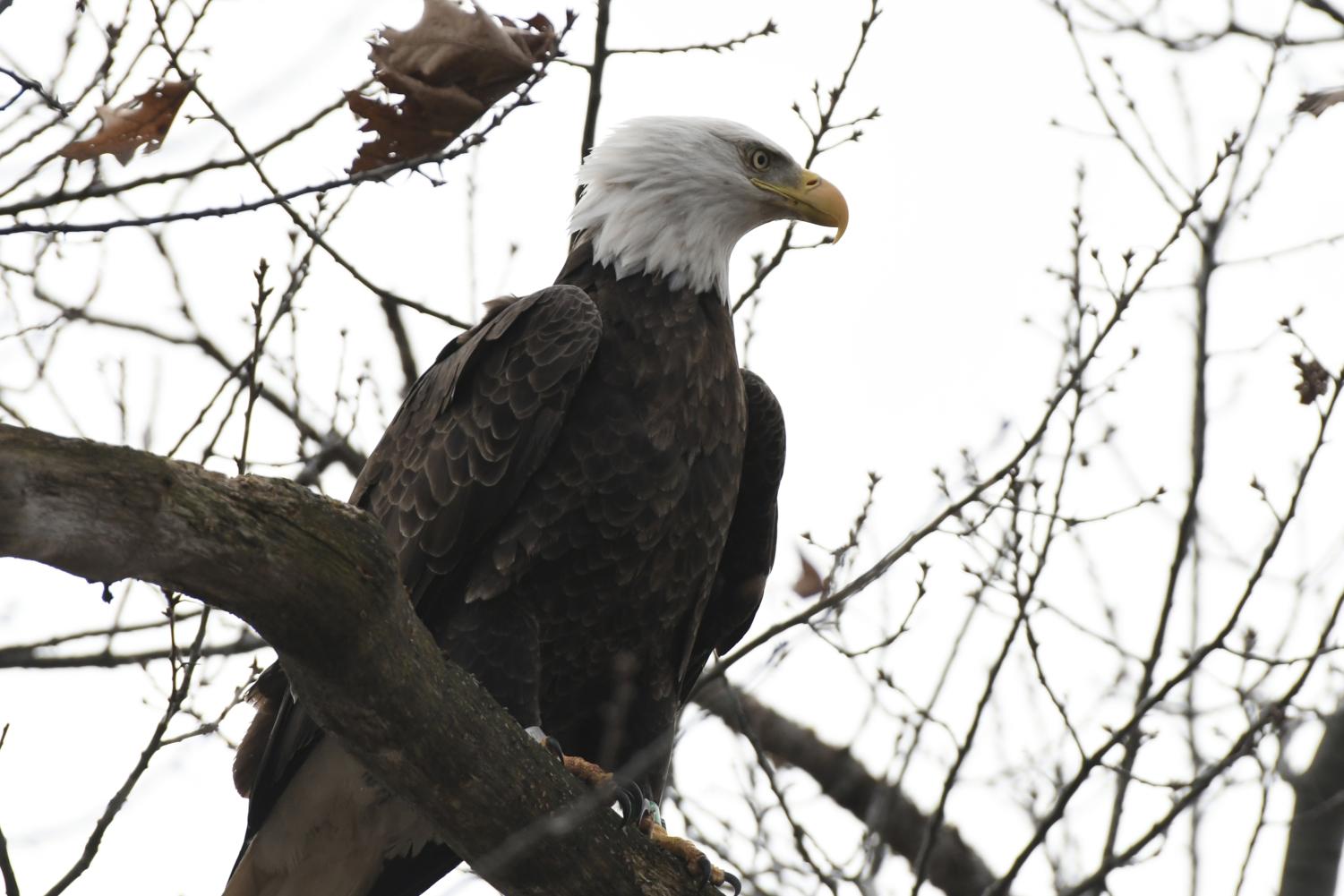
Yet before delving into the Bald Eagles of Hastings, it’s imperative to understand how the species alighted on its towering pedestal in the first place. “For my own part I wish the Bald Eagle had not been chosen as the Representative of our Country. He is a Bird of bad moral Character. He does not get his Living honestly.” These were the infamous words of Benjamin Franklin, the legendary Founding Father who lamented the idea of the Bald Eagle as the future symbol of America. Instead advocating for the “respectable” Wild Turkey, Franklin argued that the eagle was no more than a petty thief and a coward, stealing food from other raptors and being easily chased off by insignificant species such as mockingbirds or blackbirds. In the end, Franklin lost his battle against the Bald Eagle, but his comments stung in their truth. Despite the glorified impression cast upon the Bald Eagle by the American public, the species mostly uses brute force and unrivaled size to pilfer the catches of Osprey — the adept pescatarian raptor whose rate of success far surpasses that of the Bald Eagle — and will be easily driven off by a species a fraction of its size. But these minor character flaws didn’t deter the first Americans from selecting this imposing avian weapon as their national symbol, mostly because that’s exactly what they were looking for. Fresh off a shock win over the British following the American Revolution, the country was in need of something to represent its prowess, might, and bravery. Who was better for the role than the Queen of the Skies itself?

In the 1960s, however, the species nearly came crashing off its pedestal, inches away from a fatal end. Over a century of habitat loss, as well as hunting Bald Eagles due to their threat on livestock, had caused populations to steadily decline since the early 1800s. Thus, the future of the species appeared tenuous without any additional stressors. And then came DDT. Commercialized in the 1940s, DDT, or dichlorodiphenyltrichloroethane, was an insecticide employed across the US to combat insect-borne human diseases, also serving a double purpose as an excellent pesticide in agriculture. DDT’s prevalence allowed it many access points in the environment, and through the process of biomagnification, concentrations of the insecticide continually increased as it moved further down the food chain. Therefore, apex predators ingested large quantities of DDT when they ate their prey. As DDT use increased, raptor populations across the country precipitously declined. By the time research determined that the chemicals in DDT weakened the eggshells of raptors, causing parents to crack their eggs during incubation, it was nearly too late. Only 417 pairs of Bald Eagles remained in the whole of the US in 1963. Never had the species been so close to the brink of extinction. In 1972, DDT was banned due to its adverse effects on the environment, and widespread conservation efforts were targeted at helping the recovery of species impacted by the insecticide, with Bald Eagles among the top priorities.
Thankfully, Bald Eagle conservation was one of the most successful comeback stories of all time: today, around 316,700 individuals have reclaimed the skies of the US. Nearly 200 pairs nest in the Hudson Valley alone, and multiple in the immediate vicinity of Hastings. So, what must one do to turn this “rarity” into a quotidian sight (to the extent that the regality of a Bald Eagle can become quotidian!)?
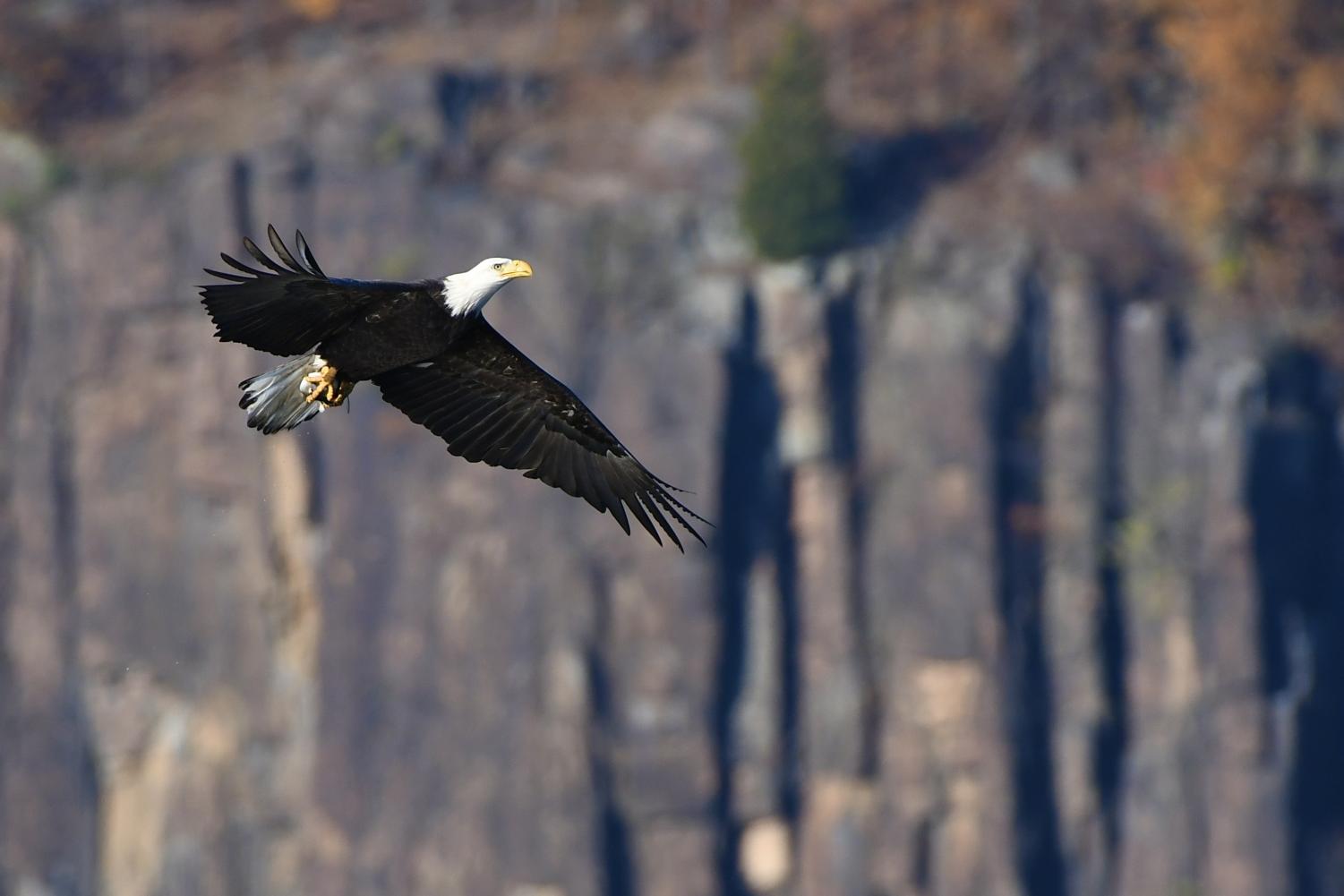
To begin with, finding Bald Eagles is much like picking your first house: it’s location, location, location! While one can plausibly see the species anywhere, Bald Eagles love eating fish, and thus a water source generates a far higher chance at seeing one. The Hudson River is an ideal spot for seeing Bald Eagles, not only because it’s our largest source of water in Hastings but because the river is a famous congregation site for the species. In winter, when local eagle numbers spike as a result of the freezing of smaller water bodies, over 100 individuals can be found in Croton, while more than a dozen can be seen from Hastings. Therefore, while any season will do (I’ve seen up to seven in July at the waterfront), winter does offer the greatest opportunity for seeing multiple Bald Eagles. Even better, mid-winter marks the beginning of eagle’s breeding season, and courtship displays of fantastical aerial maneuvers can be seen along the Hudson. Breeding season also awakens eagle animosity, and in-flight attacks by defensive individuals are exciting to behold. But don’t worry: if the river is unavailable for an eagle search, just merely look up — Bald Eagles are common flyovers anywhere in Hastings, and on sunny days, they’ll circle on the rising thermals.
The challenge of identification also plays an instrumental role in impacting people’s chances at seeing Bald Eagles. Chiefly, the “bald” moniker attached to the species name is highly misleading, forcing people to believe that without a stark white head, they couldn’t possibly be seeing a bald eagle. This couldn’t be further from reality. Bald Eagle plumage is classified into years after birth, with birds only attaining their renowned plumage — white heads and tails — as adults. To reach adulthood, an individual must be at least four years of age. As a result, until the fourth year of life, Bald Eagles show a mostly brown plumage (including on their heads and tails), with flecks of white sparsely decorating the body and wings. Often size should be a good indicator of whether you’re seeing a Bald Eagle, since they’re much larger than any other regularly occurring raptor in the area. In flight, they show broad wings with rounded ends, although the primary feathers (at the wing tips) are distinctly separated, giving the impression of fingers. Their long tail (that splays into a fan when soaring), hulking body, and robust beak, as well as their classic flight style (often with wings held at an “M”-shaped bend when actively flying or held straight and in a slight upwards “V” when soaring), make Bald Eagles a fairly distinctive species in Hastings.
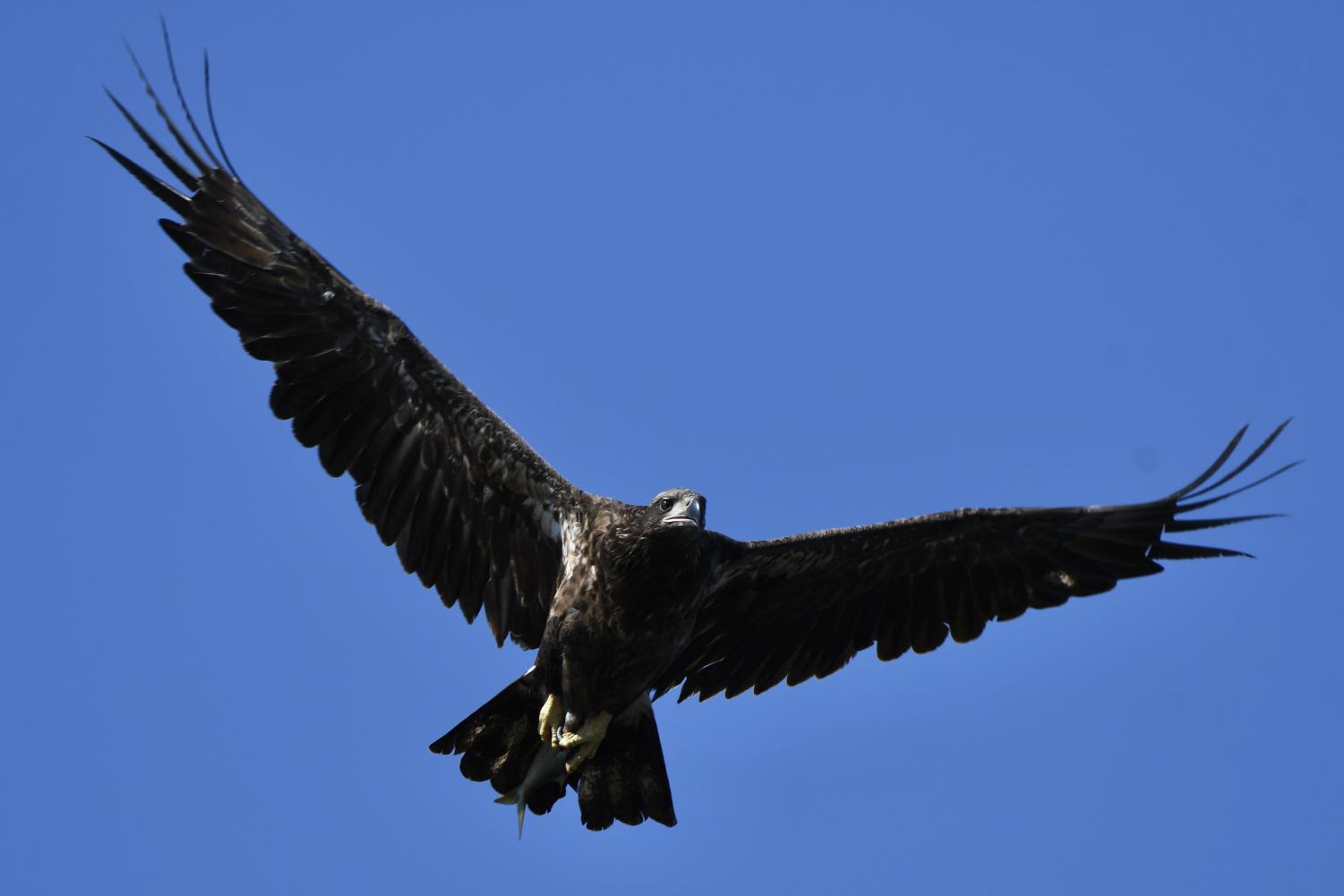
Finally, time of day is an essential aspect of maximizing Bald Eagle encounters. The species is active all day long, but early to mid morning is often when the species begins hunting. As the rising sun crests over the eastern edge of Hastings, illuminating the Hudson and the Palisades in its golden warmth, eagles will spring into action, using their keen eyesight to pinpoint fish over a mile across the river. Few things are as exciting as watching an eagle on a successful hunt. Bald Eagles will also use the morning to exhibit their territorial dominance, loudly projecting “a series of high-pitched whistling or piping notes” that runs counter to many people’s expectations of such a grand bird. And yes, this also means that the fear-inducing, power-ridden shriek that eagles make in movies and commercials is all a lie; that call has been misappropriated from the Red-tailed Hawk, our most common raptor species in Hastings.
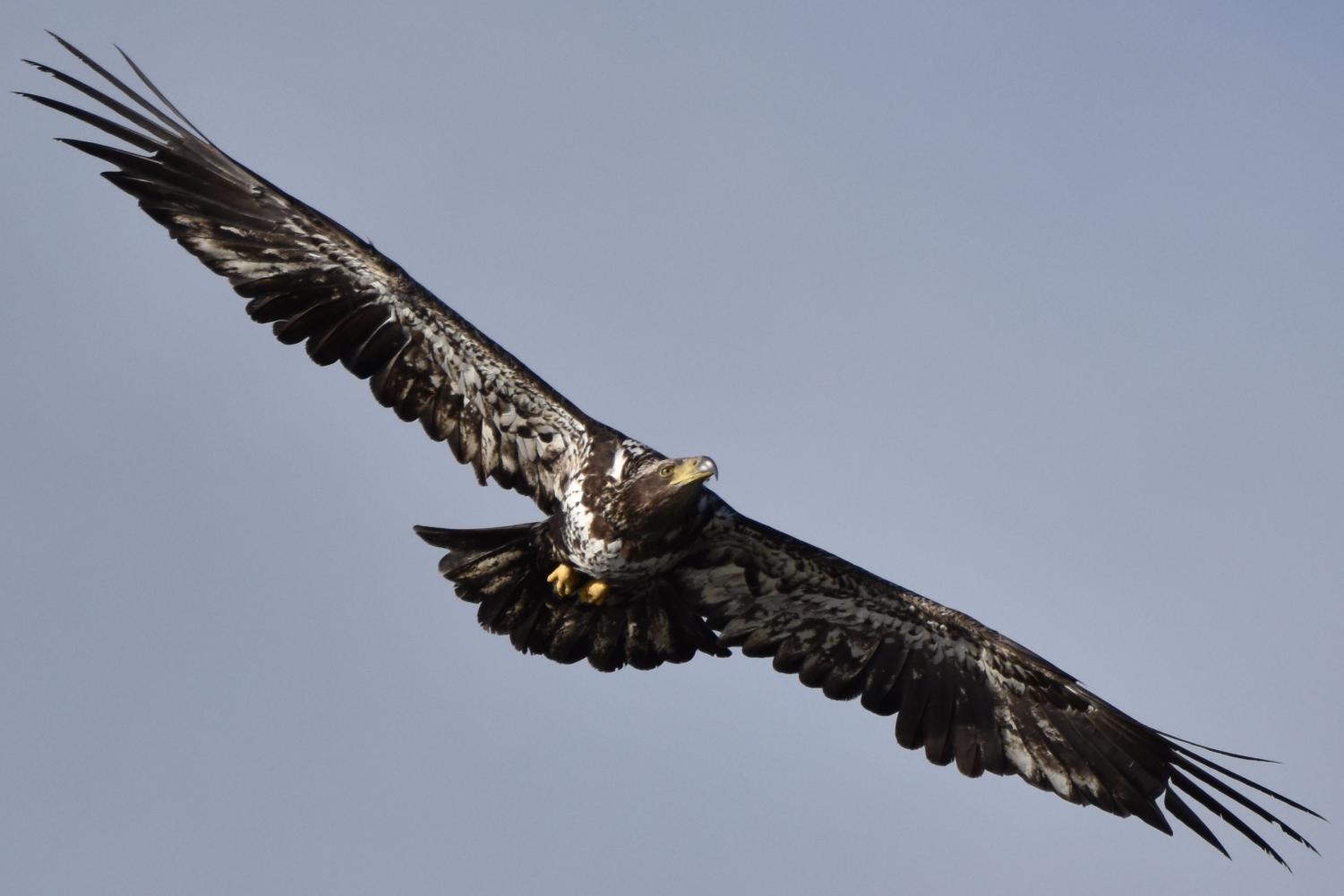
Once nearly a bird of the past, Bald Eagles have made a triumphant return to America’s wilderness, a remarkable feat from a remarkable bird, and something which we shouldn’t take for granted. I’ve seen well over 1,000 Bald Eagles, but each time another winged behemoth flies into my binoculars, its thrilling energy still entrances me. These birds may now be commonplace in Hastings, but they’re more magnificent today than ever before, showing that on top of their avian grandeur, they’re an unbelievably resilient species. I’ve been immersed in oceans of Bald Eagle magic, and now, it’s time for others to do the same. (In fact, Saturday, February 4 is EagleFest, an annual event at Croton Point Park focused on educational opportunities with raptors, food and games, and, of course, the viewing of eagles!) Good luck and keep me posted…


















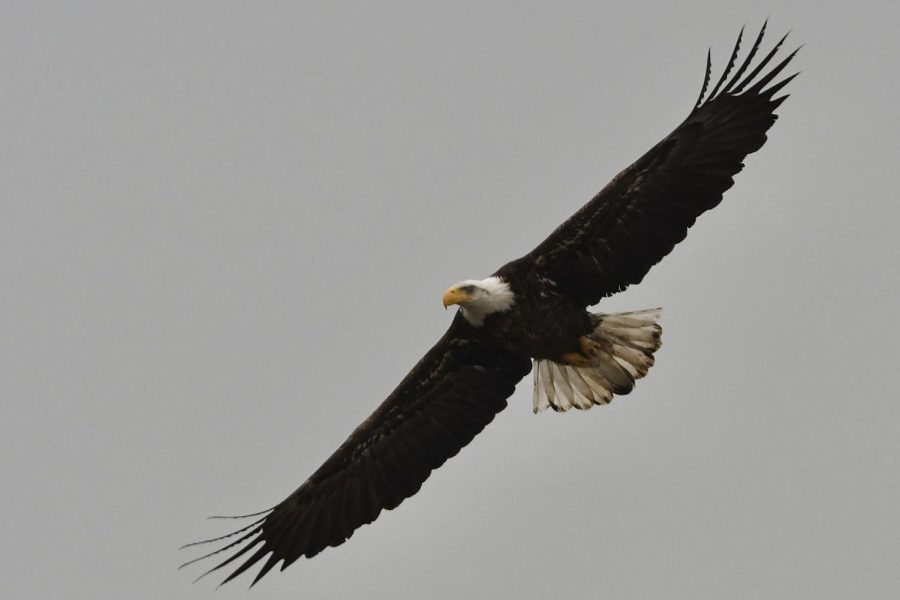
Arianna Grassia • Feb 3, 2023 at 3:13 pm
Growing up in the nineties, the story of the bald eagle as endangered species was everywhere. Now, whenever I have the pleasure of seeing a bald eagle, it feels like a special occasion. I’m so thrilled this species has made a comeback. I think I may take a trip to visit the eagle nest over at FDR State Park in Yorktown this weekend, just to say hello!